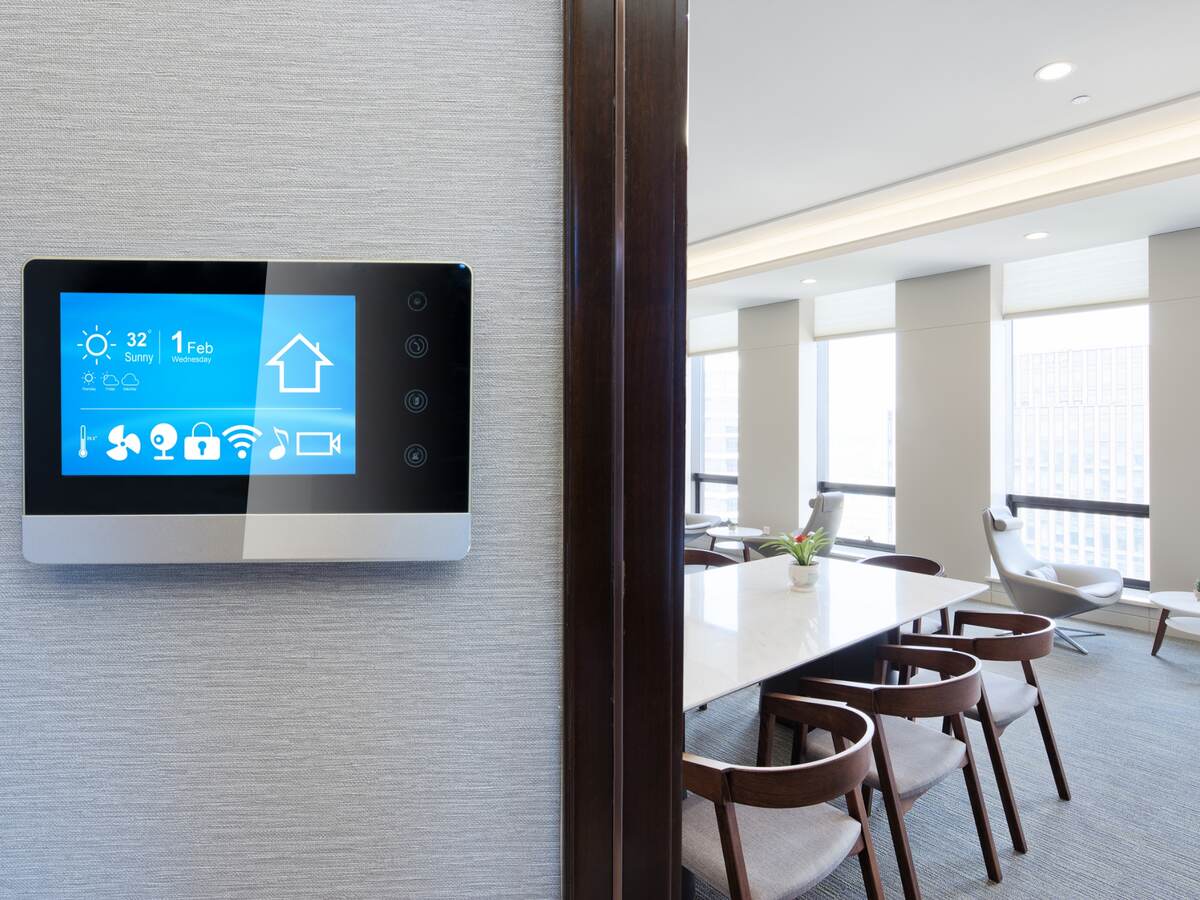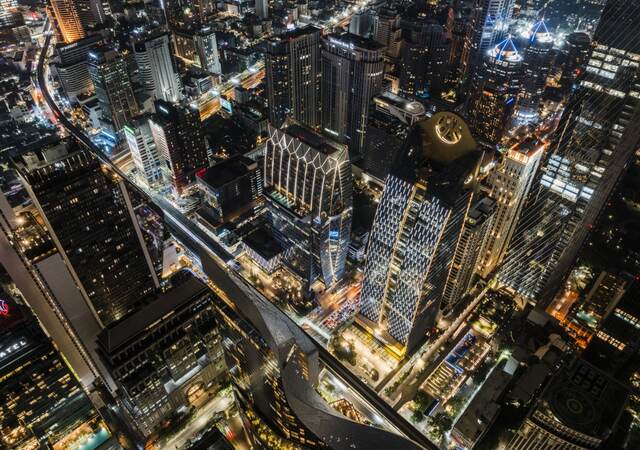February 24, 2022
The call for lighting solutions goes beyond illuminating a space. Lighting is expected to contribute to the solutions for climate change, interoperability with other building systems, public health and wellness indoors, energy efficiency, conservation and the social and governance impacts a company has on the communities in which it operates.
UL’s broad suite of services can help manufacturers achieve many goals leading to a bright future for the lighting industry. Read the full featured article from UL originally featured in the Feb. 2022 edition of the LD+A eReport for more information on:
- Lighting for smart cities
- Indoor lighting for health and wellness
- Streamlined safety, sustainability and compliance
By UL
Illuminating a Brighter, Healthier and More Sustainable Future for the Lighting Solutions Industry
Lighting is critical to our modern society, enabling safe, comfortable access to indoor and outdoor spaces any time of day or night. A society that has long valued light for the safety and convenience it provides is now awakening to the role of lighting in comfort, health and sustainability.
As the complexity of lighting solutions increases and its strategic value is recognized, providers of lighting products are expected to deliver greater value than ever. Buyers select lighting not only based on its ability to illuminate spaces but also on its ability to support a variety of sustainability objectives, achieve interoperability with other systems, as well as support human health. Growing complexity has also ushered in a host of regulatory requirements related to the safety, interoperability, energy efficiency and labelling of lighting products.
The strategic role of lighting amidst growing compliance demands deserves careful consideration as manufacturers design and produce new solutions to achieve a growing list of performance criteria.
Lighting for smart cities: more than meets the eye
Lighting is an essential element of smart cities’ infrastructure supporting multiple objectives of municipal leaders, including community wellness, safety, reduced costs through lower energy use, lower carbon footprint and broader sustainability commitments. The United Nations Economic Commission for Europe (UNECE) and the International Telecommunications Union (ITC) launched the United for Smart Sustainable Cities (U4SSC) initiative that identifies key performance indicators (KPIs). The initiative aims “to provide cities and communities with a consistent and standardized method to collect and report the data needed to quantify, measure, report and monitor performance and progress toward achieving the UN Sustainable Development Goals, becoming a smarter and more sustainable city.” This program groups 91 KPIs into three categories – economy, environment, society and culture. Strategic selection of lighting solutions can help smart cities achieve several of these KPIs. For example, advanced technologies now used in Photovoltaic (PV) Luminaire Systems deliver solutions that are energy-efficient and flexible for uses where electrical power connections are not immediately available.
Solar lighting solutions leverage renewable energy sources and reduce carbon footprint. Connected lighting enables automatic illumination optimization based on surrounding conditions, motion, weather or other factors. It can also proactively notify technicians when outages occur, maximizing performance and minimizing maintenance costs. With their advanced functionality, innovative solutions maximize energy savings, improve performance and reduce expenses in urban areas. To help ensure performance and safety, lighting products sold in the U.S. are subject to FCC regulations to monitor radiated emissions from these products. LED lighting is subject to Energy Policy Conservation Act (EPCA) compliance and requires efficiency testing by a reputable lab.
As circularity emerges as a priority, municipalities may seek solutions constructed of recycled materials or those that lend themselves for easy part replacement and repair rather than complete product disposal and replacement. Solutions such as UL’s environmental claim validations may help manufacturers of lighting solutions offer third-party confirmation that their products achieve other desired, single attribute, ecological benefits, like the percentage of recycled content in a material. Used in combination or independently, UL’s carbon footprint program can help measure the total greenhouse gas emissions associated with a particular product based on quantifiable metrics calculated in accordance with ISO 14064 Part 3:2019. Both the ISO standard and the UL program align with U4SSC metrics as well as carbon and circularity goals many municipal leaders around the world have committed to achieve.
An extensive list of considerations requires the purchaser’s due diligence and careful engineering, testing and certification by the manufacturer. To streamline compliance, manufacturers should understand regulations and non-regulatory drivers that apply to their products before market launch.
Indoor lighting: A bright spot in health and wellness
Lighting is an integral part of building systems and plays a critical role in health, safety and sustainability in buildings. Human-centric lighting is an emerging priority in healthy buildings. Lighting’s role in providing comfortable, productive spaces is considered in healthy building certifications, including WELL and Fitwel. Designed to promote natural circadian rhythms, human-centric lighting takes into account how lighting impacts mood, cognitive performance, sleep patterns and energy levels. To assist designers and specifiers, UL collaborated with the industry to develop UL DG 24480, Design Guidelines for Circadian Entrainment, providing optional design guidelines for promoting circadian entrainment with light for day-active people.
Lighting solutions can help earn credits toward LEED, BREEAM, and other green building certifications, all of which also contribute toward U4SSC sustainability indicators for smart cities. Like city lighting, interoperability with other building systems is also essential. Interoperability testing ensures lighting solutions work properly with other systems, wireless, apps and pose minimal risk to occupants in cases of system failure. The electrical safety of lighting solutions helps prevent risk of fire, shock or other damage to buildings and is considered by purchasers and installers.
Emerging lighting solutions support health through the destruction of dangerous pathogens. In response to the global pandemic, innovations in UV lighting solutions have surged and are deployed in buildings worldwide. However, some of the safety hazards associated with UV lighting solutions include exposure risks to eyes, skin and ozone, which can compromise indoor air quality. To address safety risks associated with UV lighting, UL has developed several solutions to help guide manufacturers in the safe and sustainable production of UV lighting products. UL 8802, Outline of Investigation (OOI) for UV Germicidal Equipment and Systems, outlines a collection of requirements into one document covering both germicidal equipment and site safeguards as well as precautions for use, handling and servicing. UL 2998, a procedure to measure Zero Ozone Emissions from Air Cleaners, validates that an air cleaning device, including those employing UV lighting, does not produce ozone above a background concentration of 0.005 ppm. This is ten times more stringent than the 0.050 ppm threshold called out by California Air Resources Board (CARB) requirements. UL 2998 is also referenced in ANSI/ASHRAE 62.1-2019: Ventilation for Indoor Air Quality Standard as a compliance pathway for air cleaning devices, since the 62.1-2019 standard does not allow the use of air cleaning devices that produce ozone.
To further support human health, lighting manufacturers may be subject to testing and compliance with the European Union’s (Restriction of Hazardous Substances) RoHS directive and/or California’s Proposition 65, both of which aim to limit the use of potentially hazardous substances. Many manufacturers waste time and money trying to collect information from their supply chain, a process that can be lengthy and expensive and result in unverified data. Complete product testing quickly provides accurate data required for market entry. UL offers an end-to-end solution for restricted materials compliance, including full product testing.
Lighting providers may employ a variety of approaches and tools to differentiate their products and the environmental benefits they offer buyers using lighting to create healthier, more sustainable indoor environments. Manufacturers should select knowledgeable partners to help assess the most effective ways to document and communicate lighting’s contribution to green buildings.
Solutions that streamline safety, sustainability and compliance
The dynamic new applications for lighting and the ever-changing performance attributes in an increasingly connected world demand new levels of product design, collaborative engineering, safety and performance testing, sustainability verifications and more.
UL supports lighting manufacturers with the experience, expertise and resources to help them achieve optimal performance, sustainability, safety and compliance. A single source for testing, certification and advisory services, UL has laboratories around the world with experts dedicated to lighting solutions who understand the international regulatory landscape. UL brings expertise in safety and interoperability, performance and sustainability to enable manufacturers to streamline compliance and market acceptance.
The call for lighting solutions goes beyond illuminating a space. Lighting is expected to contribute to the solutions for climate change, interoperability with other building systems, public health and wellness indoors, energy efficiency, conservation and the social and governance impacts a company has on the communities in which it operates. UL’s broad suite of services can help manufacturers achieve many goals leading to a bright future for the lighting industry.
Originally published in the in the Feb. 2022 edition of the LD+A eReport
Get connected with our sales team
Thanks for your interest in UL's products and services. Let's collect some information so we can connect you with the right person.



